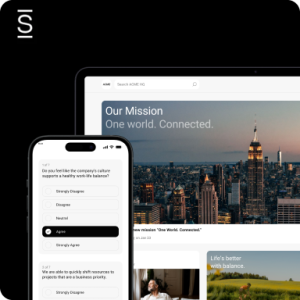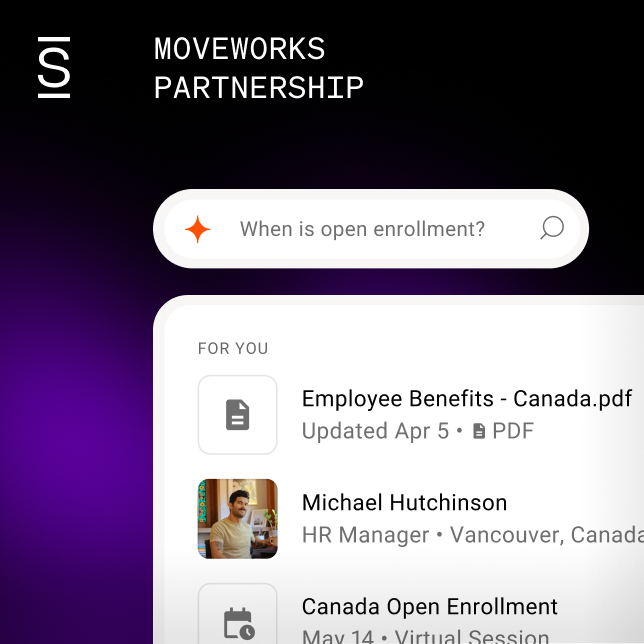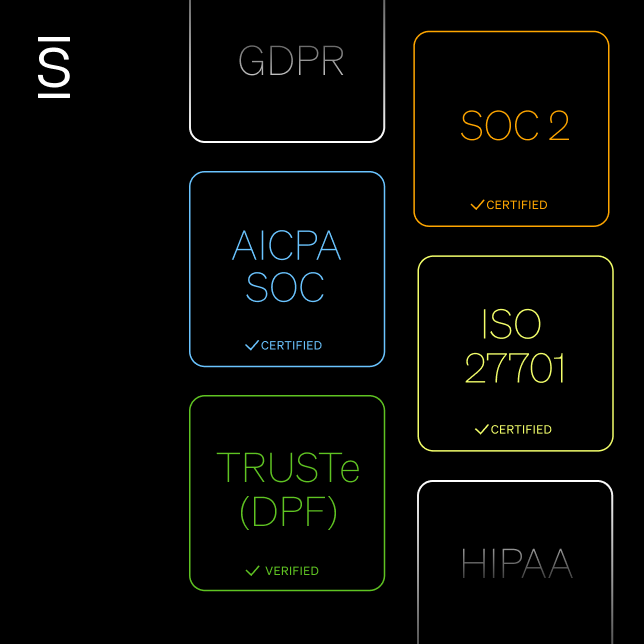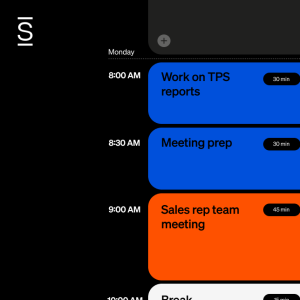In this two-part article series, I explain how in my role as a Corporate Brand and Communications Manager at Simpplr used our intranet product to assess our company needs, create a plan to improve organizational performance, and implement our strategies for the benefit of our employees, leadership, and the success of our business.
I work at an industry-leading tech company. It’s not just any tech company, and they are creating some of the best internal communications products I have used in my 15 years in the industry. So, building and maintaining an internal communications strategy that includes the intranet as a core channel should be easy, right?
Wrong.
You can have the most cutting-edge tools in the world, but if you don’t have someone leading the way, then the outcome is less than ideal. Think, for example, of an air traffic control tower. Their purpose is to communicate with highly skilled pilots to fly and land airplanes safely. Suppose air traffic controllers, pilots, and airport personnel are not aligned. Planes cannot land and take off smoothly. Passengers and their luggage don’t get to where they need to be on time.
The control tower is the brains behind the operation, issuing critical and sometimes lifesaving messages to all the “body” parts to work together in tandem successfully. However, Simpplr didn’t have an air traffic controller tower. They had a bunch of skilled pilots and good airport personnel. But the quality of the workers does not guarantee alignment. Sometimes, it can become disastrous because they are not always working synchronously, especially without defined leadership and guidelines.
WHAT YOU NEED FROM YOUR INTRANET
To have an intranet that delivers value and an excellent modern employee experience, you need a good strategy, the right people, and great technology. If built and managed correctly, the intranet will enable employees and leaders to communicate, collaborate, and share ideas and information. Ultimately, the intranet will strategically improve the company’s performance and help us reach our business goals. Here’s how:
- It will improve employee satisfaction, engagement, and culture by being a headquarters where employees can find the information they need and want while building a sense of belonging.
- It will create greater organizational agility by helping employees navigate change initiatives. By increasing the chance that initiatives are faster to rollout and higher intranet adoption, you can establish better alignment across the organization on those initiatives and overall business vision and performance.
- It can increase employee productivity efficiency when used correctly. By giving them a single source of truth where information is easily accessible, there will be no more time spent hunting down information.
How did I accomplish this in my work environment? Great question! I took dynamic steps to get to my goal.
STEP 1 TO MY GOAL
I began with an overall snapshot of what I had, and I needed a holistic view of the state of the current intranet. This ‘big picture’ would help identify the issues plaguing the workplace. To do that, I had to take inventory of where we were concerned with strategy and processes and what we had for resources. I employed two valuable tools to accomplish the task.
First, I conducted a user perception survey to gather feedback on the user experience to identify potential improvements. It gave me a baseline for ongoing user perception measurement as improvements are made. Establishing a baseline would help us gauge how often people used the intranet. For example, were employees quickly finding what they were looking for? Could they run into outdated content? It also gave us insight into what they liked best about the current intranet and improved.
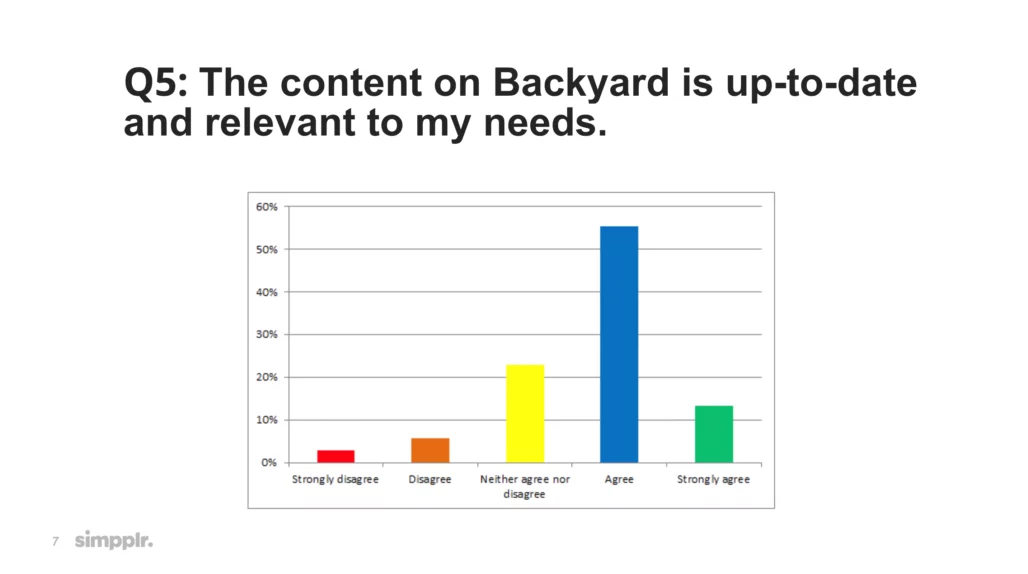
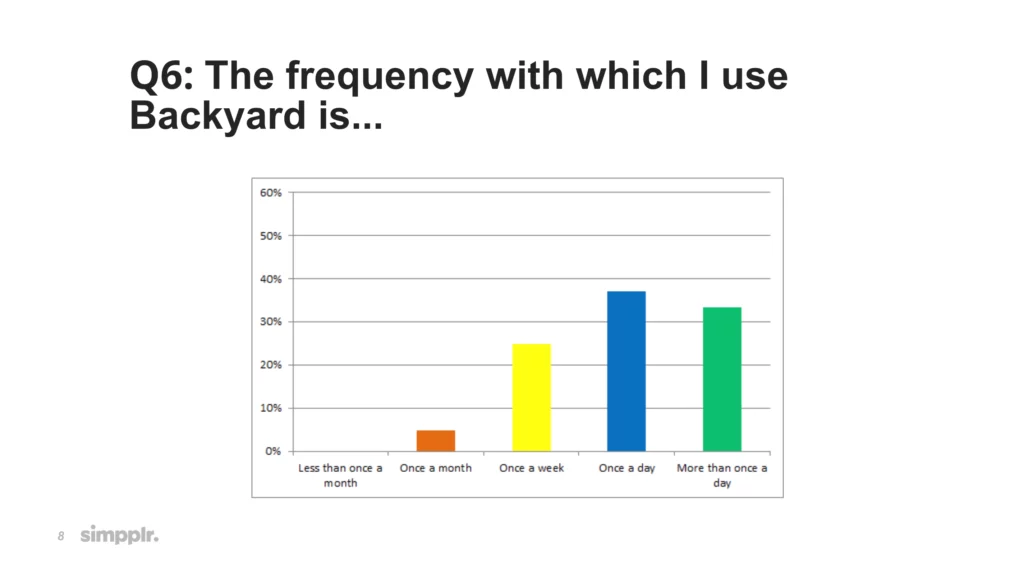
Second, I performed a maturity assessment that looked at:
- Defining an intranet strategy aligned to corporate goals is critical to delivering ongoing value to the business and employees. Your plan outlines the current state of your intranet, the features and functionalities you will need to build and implement to address user needs, and how you will do the work (Hint: This is what you will be making or updating through this process).
- A governance plan outlines how the intranet is used and managed, including who makes and approves strategic decisions and who has access to publish content.
- An adoption plan that outlines the steps the address how usage adoption and change will occur across the organization. As you make changes to the intranet strategy and how it will be managed and organized, we will do to ensure people are set up for success.
- With a baseline and predetermined metrics, we could easily measure our success.
- Ensure digital connectedness of the intranet to the rest of the organization’s tech ecosystem.
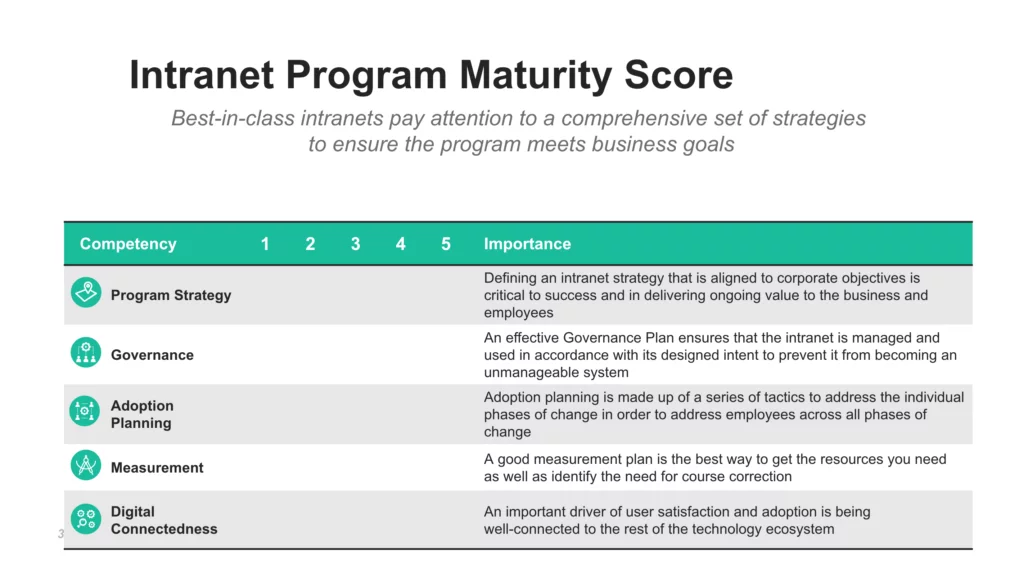
THE RESULTS OF STEP 1
The good news is that employees were using the intranet. The bad news was that there wasn’t a current strategy as a starting guide or to help shape what was already in place and how the intranet would help strategically improve the company’s performance.
Our intranet contained hundreds of pieces of content that needed to be removed. There were files, pages, events, and albums that were no longer relevant. Some were posted in 2018, and in tech years, we know that’s ancient! The then-current site organization was confusing, and it made finding information difficult. We needed a new navigation and information architecture to help people find content intuitively.
Because we built the product, our teams used it as a test environment while we were also using it as our intranet. We decided that Backyard would become a true production environment and no longer used it to test. While this might be unique to Simpplr, think of it as Beta testing your product with your own employees. Unfortunately, we didn’t have a governance plan. That meant no steering committee or guidelines around who should (and should not) have access to create pages, post content, remove content, and change information architecture.
There was also no overall design that aligned with our brand. Additionally, there were no guidelines and the overall look and feel of pages, content, images, and other design elements. Another critical missing aspect of governance was the lack of training or guidelines for people who manage or post content.
There were more issues, the majority of which stemmed from not having an intranet strategy that outlined the purpose of the intranet. For example, how will it be managed? How could we continue to measure and improve it? Most of all, how will it help achieve business goals?
But we knew that employees used the intranet despite these issues. That gave us hope that we were clearly ready for an improved intranet experience.
We used the results of the maturity assessment and user perception survey to lay the basic foundation and framework of a strategy that included a list of issues we needed to solve quickly. We prioritized those issues to create a project plan with milestones and deadlines.
Importantly, we socialized that plan with the executive sponsor to get feedback and approval.
STEP 2 TO MY GOAL
Put the right people in the right roles.
All of this starts with having a good project team. Check and check! The team helped manage the change initiative. It’s worth saying again that I am working with some of the best (if not the best) implementation and project managers in the industry. They were enthusiastic about the project and more than ready to improve our intranet.
Next, we needed to form a Steering Committee. The Steering Committee’s role is to give feedback and advice on decisions and the overall direction. Our Steering Committee is composed of a representative from each department who has knowledge of the intranet. Because of the nature of the company, most people know the product, so that wasn’t a difficult task.
We took the list of issues to the Steering Committee to get their advice and feedback on it. Since many of them have deep knowledge of the intranet platform, they could get good advice. We made adjustments, and then we are ready to get started.
Do I have your interest piqued? To find out the rest of my journey and if we reached our goal, look for Part 2 of this series, soon to come.


